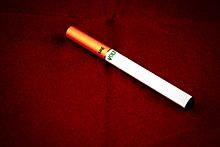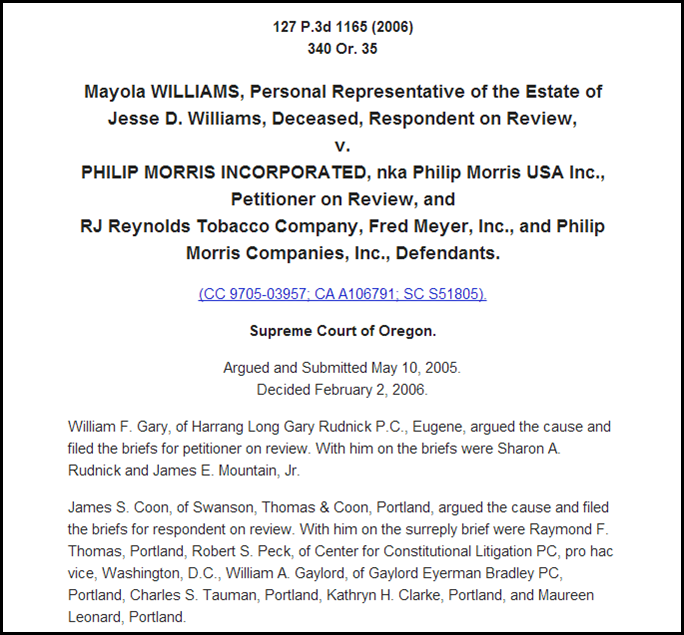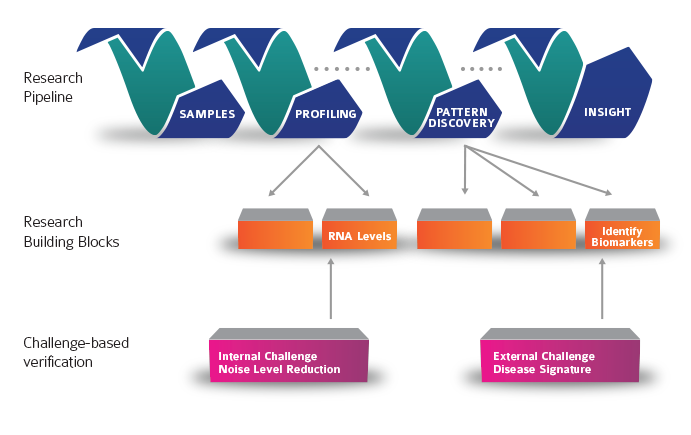-
Posts
3693 -
Joined
-
Last visited
-
Days Won
15
Everything posted by MarylandQuitter
-
NOPE, Not One Puff Ever!
-
What "you've always done" obviously isn't a recipe for success, is it? No plan. You're not ready yet.
-

an urge is not a command to smoke
MarylandQuitter replied to babs609's topic in Quit Smoking Discussions
Hey Babs! That's good news for the new quitters. I don't even think about smoking but I'm very aware that I'm a former smoker and all it takes is one puff! -
Electronic cigarettes have hit the American market with force, and their use has increased dramatically in just a few years. The tobacco industry has gotten into the game, bringing big money into e-cigarette marketing. At ASH, we welcome products that have been proven to help smokers quit, and a number of FDA approved products are available on the market. But we are not yet convinced that e-cigarettes are indeed that type of product and we remain concerned by the lack of regulation surrounding e-cigarettes. As a science-based advocacy group, we believe there are simply too many unknowns about e-cigarettes. Here is what we do NOT know Whether e-cigs help smokers quit. There are some anecdotal stories of ex-smokers who could not quit until they tried e-cigarettes, but there is no substantiating research yet to corroborate this claim. The impact on children. According to the CDC the number of teenagers using e-cigs has doubled. Are kids now becoming nicotine addicts without ever picking up a cigarette? Will some of them switch to regular cigarettes at a later stage? We don’t know enough about what impact e-cigs have on initiation into nicotine addiction. The contents of the vapor. The marketing is aimed at making consumers think e-cigarettes just emit water vapor, but they do not. There is some strong evidence that the vapor contains toxins and carcinogens, and because there are dozens of unregulated manufacturers, it is impossible to know what exactly is being inhaled by the people who are exposed to vapor from e-cigarette users. The health impact on users. Without knowing their ingredients, we cannot know the health effects that result from e-cigarette usage or exposure. While e-cigarette companies claim they are safe, they have no scientific evidence to corroborate this claim either. Here is what we DO know E-cigarettes are aggressively marketed to children, with flavors like bubble gum and cotton candy. The marketing is disturbingly similar to past cigarette marketing that is now illegal. E-cigarettes are nicotine delivery devices. Nicotine is highly addictive, according to the National Institute of Drug Abuse (NIDA) – http://www.drugabuse.gov/publications/research-reports/tobacco-addiction/nicotine-addictive. The Food and Drug Administration is researching e-cigarettes in order to determine safe and necessary regulations (like all other products we ingest), but no official government regulations can be expected for at least three years. Here is ASH’s stance If e-cigarettes are safe, the e-cig companies should prove it. At present, they are in the business of selling an addictive drug, and they are targeting children. For now, while the safety of e-cigs remains in doubt, they should be s treated like cigarettes. This means: • No “vaping” in places that ban smoking; • No advertisements on television, radio, or billboards; • No marketing to children whatsoever; • No sales to children, with procedures in place to prevent children from buying e-cigs on the Internet; • No misleading health claims. Utah, North Dakota, New York City, and other governments in the U.S. and abroad already regulate e-cigarettes, and ASH encourages all jurisdictions to do the same. We, along with many other public health and regulatory organizations, also urge the FDA to move as quickly as possible to regulate e-cigarettes at the national level and to protect the health of everyone. Additional Information The FDA on e-cigarettes: http://www.fda.gov/newsevents/publichealthfocus/ucm172906.htm The World Health Organization (WHO) on e-cigarettes: http://www.who.int/tobacco/communications/statements/eletronic_cigarettes/en/ Studies on E-Cigarettes - E-Cig Briefing Paper - http://www.fda.gov/%20NewsEvents/Newsroom/PressAnnouncements/ucm173222.htm - http://www.cdc.gov/mmwr/preview/mmwrhtml/mm6235a6.htm?s_cid=mm6235a6_w - http://www.dkfz.de/en/presse/download/RS-Vol19-E-Cigarettes-EN.pdf - http://www.hsph.harvard.edu/news/hsph-in-the-news/tobacco-control-news-ecigarette-risks-greek-rates-decline/ - http://tobacco.ucsf.edu/e-cigarettes-release-toxic-chemicals-indoors-should-be-included-clean-indoor-air-laws-and-policies - http://legacyforhealth.org/newsroom/press-releases/new-study-investigates-online-tobacco-and-e-cigarette-advertising E-Cigarettes in the News - 45 State Attorneys General Call for Tobacco Carve Out - Dangers of E-Cigs - Chicago Bans Indoor E-Cigs - New York City Bans Indoor E-Cigs - A Hot Debate Over E-Cigarettes as a Path to Tobacco, or From It - Utah Bans E-Cigs like Cigarettes This article originally appeared on http://ash.org
-
Congrats, Deb! Welcome to our support group. So glad that you decided to quit and there was no better time than 3 days ago. Stay active and post as often as you like. We're open 24/7 and somebody is always on the board if you need anything.
-
plaw-111publ31.pdf PLAW-111publ31 This is the full publication in PDF. Below is an overview of the same. The "Tobacco Control Act" became law on June 22, 2009. An Overview Of The Family Smoking Prevention and Tobacco Control Act: Consumer Fact Sheet The Tobacco Control Act: Recognizes that virtually all new users of tobacco products are under 18 – the minimum legal age to purchase these products. Many new users will become addicted before they are old enough to understand the risks and ultimately will die too young of tobacco-related diseases. The Tobacco Control Act seeks to, among other things, prevent and reduce tobacco use by these young people. Recognizes that tobacco products are legal products available for adult use, prohibits false or misleading labeling and advertising for tobacco products and provides the tobacco industry with several mechanisms to submit an application to FDA for new products or tobacco products with modified risk claims. Gives FDA enforcement authority as well as a broad set of sanctions for violations of the law, and directs FDA to contract with states to assist FDA with retailer inspections. Note: This overview highlights some of the provisions of the Tobacco Control Act and is not intended to be a comprehensive guide or to reflect FDA’s interpretation of the Tobacco Control Act. For complete information, you must read the entire law. For your convenience, in the text below we provide the section number of the Tobacco Control Act and a link to the full text of the section. For updates on all FDA tobacco product activities, visit www.fda.gov/TobaccoProducts. For information about when certain sections of the Act go into effect, refer to the Timeline: Family Smoking Prevention and Tobacco Control Act What the Tobacco Control Act does Restricts cigarettes and smokeless tobacco retail sales to youth by directing FDA to issue regulations which, among other things: Require proof of age to purchase these tobacco products – the federal minimum age to purchase is 18 – Sec. 102 Require face-to-face sales, with certain exemptions for vending machines and self-service displays in adult-only facilities – Sec. 102 Ban the sale of packages of fewer than 20 cigarettes – Sec. 102 Allow certain exemptions in adult-only facilities – Sec. 102 Restricts tobacco product advertising and marketing to youth by directing FDA to issue regulations which, among other things: Limit color and design of packaging and advertisements, including audio-visual advertisements – Sec. 102 (However, implementation of this provision is uncertain due to pending litigation. See Discount Tobacco City & Lottery v. USA, formerly Commonwealth Brands v. FDA) Ban tobacco product sponsorship of sporting or entertainment events under the brand name of cigarettes or smokeless tobacco – Sec.102 Ban free samples of cigarettes and brand-name non-tobacco promotional items – Sec. 102 Note: Among its many provisions, the Tobacco Control Act required FDA to reissue its 1996 final regulations aimed at restricting the sale and distribution of cigarette and smokeless tobacco products. (Section 102) The Tobacco Control Act specifically: Prohibits “reduced harm” claims including “light,” “low,” or “mild,” without an FDA order to allow marketing – Sec. 911 of the Federal Food, Drug, and Cosmetic Act (FDCA) Requires industry to submit marketing research documents – Sec. 904 of the FDCA Requires bigger, more prominent warning labels for cigarettes and smokeless tobacco products. However, the implementation date is uncertain, due to ongoing proceedings in the case of R. J. Reynolds Tobacco Co. v. U.S. Food and Drug Administration, No, 11-1482 (D.D.C.), on appeal, No 11-5332 (D.C.Cir.). Packaging and advertisements for cigarettes and smokeless tobacco must have revised warning labels with a larger font size. Font colors are limited to white on a black background or black on a white background. – Sec. 201 and 204 Cigarette package health warnings will be required to cover the top 50 percent of both the front and rear panels of the package, and the nine specific warning messages must be equally and randomly displayed and distributed in all areas of the United States. These messages must be accompanied by color graphics showing the negative health consequences of smoking cigarettes. – Sec. 201 Smokeless tobacco package warnings must cover 30 percent of the two principal display panels, and the four specific required messages must be equally and randomly displayed and distributed in all areas of the United States. – Sec. 204 Gives FDA authority over, among other things: Registration and inspection of tobacco companies – Sec. 905 of the FDCA Requires owners and operators of tobacco companies to register annually and be subject to inspection every 2 years by FDA. Standards for tobacco products – Sec. 907 of the FDCA Allows FDA to require standards for tobacco products (for example, tar and nicotine levels) as appropriate to protect public health. Bans cigarettes with characterizing flavors (except menthol and tobacco). “Premarket Review” of new tobacco products – Sec 910 and 905 of the FDCA Requires manufacturers who wish to market a new tobacco product to obtain a marketing order from FDA prior to marketing that new product. “Modified risk” products – Sec. 911 of the FDCA Requires manufacturers who wish to market a tobacco product with a claim of reduced harm to obtain a marketing order from FDA. Enforcement action plan for advertising and promotion restrictions – Sec 105 FDA published a document entitled “Enforcement Action Plan for Promotion and Advertising Restrictions.” The action plan details FDA’s current thinking on how it intends to enforce certain requirements under the Tobacco Control Act. The Tobacco Control Act also requires Tobacco industry must disclose research on the health, toxicological, behavioral, or physiologic effects of tobacco use. – Sec 904 of the FDCA Tobacco industry must disclose information on ingredients and constituents in tobacco products; and must notify FDA of any changes. – Sec 904 of the FDCA How FDA oversees the implementation of the Tobacco Control Act Among other things, FDA: Established the Center for Tobacco Products to implement the Tobacco Control Act – Sec. 901 of the FDCA Established the Tobacco Products Scientific Advisory Committee to provide advice, information, and recommendations to the FDA – Sec. 917 of the FDCA Assesses user fees on tobacco product manufacturers and importers based on their market share. The fees are used to fund FDA activities related to the regulation of tobacco products – Sec. 919 of the FDCA Reports to Congress on how best to encourage companies to develop innovative products that help people stop smoking. Issues regulations and conducts inspections to investigate illicit trade in tobacco products – Sec. 920 of the FDCA Convenes a panel of experts to study the public health implications of raising the minimum age to purchase tobacco products – Sec. 104 Limits on FDA’s authority FDA cannot: Ban certain specified classes of tobacco products – Sec. 907 of the FDCA Require the reduction of nicotine yields to zero – Sec. 907 of the FDCA Require prescriptions to purchase tobacco products – Sec. 906 of the FDCA Ban face-to-face tobacco sales in any particular category of retail outlet – Sec. 906 of the FDCA The Tobacco Control Act preserves the authority of state, local, and tribal governments to regulate tobacco products in certain specific respects. It also prohibits, with certain exceptions, state and local requirements that are different from, or in addition to, requirements under the provisions of the FDCA relating to specified areas.
-
On January 11, 1964, Luther L. Terry, M.D., Surgeon General of the U.S. Public Health Service, released the first report of the Surgeon General's Advisory Committee on Smoking and Health. On the basis of more than 7,000 articles relating to smoking and disease already available at that time in the biomedical literature, the Advisory Committee concluded that cigarette smoking is— A cause of lung cancer and laryngeal cancer in men A probable cause of lung cancer in women The most important cause of chronic bronchitis The release of the report was the first in a series of steps, still being taken more than 40 years later, to diminish the impact of tobacco use on the health of the American people. For several days, the report furnished newspaper headlines across the country and lead stories on television newscasts. Later it was ranked among the top news stories of 1964. During the more than 40 years that have elapsed since that report, individual citizens, private organizations, public agencies, and elected officials have pursued the Advisory Committee's call for "appropriate remedial action." Early on, the U.S. Congress adopted the Federal Cigarette Labeling and Advertising Act of 1965 and the Public Health Cigarette Smoking Act of 1969. These laws— Required a health warning on cigarette packages Banned cigarette advertising in the broadcasting media Called for an annual report on the health consequences of smoking In September 1965, the Public Health Service established a small unit called the National Clearinghouse for Smoking and Health. Through the years, the Clearinghouse and its successor organization, the Centers for Disease Control and Prevention's Office on Smoking and Health, have been responsible for 29 reports on the health consequences of smoking. In close cooperation with voluntary health organizations, the Public Health Service has— Supported successful state and community programs to reduce tobacco use Disseminated research findings related to tobacco use Ensured the continued public visibility of anti-smoking messages Within this evolving social milieu, the population has given up smoking in increasing numbers. Nearly half of all living adults who ever smoked have quit. The anti-smoking campaign is a major public health success with few parallels in the history of public health. It is being accomplished despite the addictive nature of tobacco and the powerful economic forces promoting its use. However, more than 45 million American adults still smoke, more than 8 million are living with a serious illness caused by smoking, and about 438,000 Americans die prematurely each year as a result of tobacco use. Efforts to implement proven interventions must be continued and expanded.
-
Fact Sheet This is the 31st tobacco-related Surgeon General’s report issued since 1964. It describes the epidemic of tobacco use among youth ages 12 through 17 and young adults ages 18 through 25, including the epidemiology, causes, and health effects of this tobacco use and interventions proven to prevent it. Scientific evidence contained in this report supports the following facts: We have made progress in reducing tobacco use among youth; however, far too many young people are still using tobacco. Today, more than 600,000 middle school students and 3 million high school students smoke cigarettes. Rates of decline for cigarette smoking have slowed in the last decade and rates of decline for smokeless tobacco use have stalled completely. Every day, more than 1,200 people in this country die due to smoking. For each of those deaths, at least two youth or young adults become regular smokers each day. Almost 90% of those replacement smokers smoke their first cigarette by age 18. There could be 3 million fewer young smokers today if success in reducing youth tobacco use that was made between 1997 and 2003 had been sustained. Rates of smokeless tobacco use are no longer declining, and they appear to be increasing among some groups. Cigars, especially cigarette-sized cigars, are popular with youth. One out of five high school males smokes cigars, and cigar use appears to be increasing among other groups. Use of multiple tobacco products—including cigarettes, cigars, and smokeless tobacco—is common among young people. Prevention efforts must focus on young adults ages 18 through 25, too. Almost no one starts smoking after age 25. Nearly 9 out of 10 smokers started smoking by age 18, and 99% started by age 26. Progression from occasional to daily smoking almost always occurs by age 26. Tobacco use by youth and young adults causes both immediate and long-term damage. One of the most serious health effects is nicotine addiction, which prolongs tobacco use and can lead to severe health consequences. The younger youth are when they start using tobacco, the more likely they’ll be addicted. Early cardiovascular damage is seen in most young smokers; those most sensitive die very young. Smoking reduces lung function and retards lung growth. Teens who smoke are not only short of breath today, they may end up as adults with lungs that will never grow to full capacity. Such damage is permanent and increases the risk of chronic obstructive pulmonary disease. Youth are sensitive to nicotine and can feel dependent earlier than adults. Because of nicotine addiction, about three out of four teen smokers end up smoking into adulthood, even if they intend to quit after a few years. Among youth who persist in smoking, a third will die prematurely from smoking. Youth are vulnerable to social and environmental influences to use tobacco; messages and images that make tobacco use appealing to them are everywhere. Young people want to fit in with their peers. Images in tobacco marketing make tobacco use look appealing to this age group. Youth and young adults see smoking in their social circles, movies they watch, video games they play, websites they visit, and many communities where they live. Smoking is often portrayed as a social norm, and young people exposed to these images are more likely to smoke. Youth identify with peers they see as social leaders and may imitate their behavior; those whose friends or siblings smoke are more likely to smoke. Youth who are exposed to images of smoking in movies are more likely to smoke. Those who get the most exposure to onscreen smoking are about twice as likely to begin smoking as those who get the least exposure. Images of smoking in movies have declined over the past decade; however, in 2010 nearly a third of top-grossing movies produced for children—those with ratings of G, PG, or PG-13— contained images of smoking. Tobacco companies spend more than a million dollars an hour in this country alone to market their products. This report concludes that tobacco product advertising and promotions still entice far too many young people to start using tobacco. The tobacco industry has stated that its marketing only promotes brand choices among adult smokers. Regardless of intent, this marketing encourages underage youth to smoke. Nearly 9 out of 10 smokers start smoking by age 18, and more than 80% of underage smokers choose brands from among the top three most heavily advertised. The more young people are exposed to cigarette advertising and promotional activities, the more likely they are to smoke. The report finds that extensive use of price-reducing promotions has led to higher rates of tobacco use among young people than would have occurred in the absence of these promotions. Many tobacco products on the market appeal to youth. Some cigarette-sized cigars contain candy and fruit flavoring, such as strawberry and grape. Many of the newest smokeless tobacco products do not require users to spit, and others dissolve like mints; these products include snus—a spitless, dry snuff packaged in a small teabag-like sachet—and dissolvable strips and lozenges. Young people find these products appealing in part because they can be used without detection at school or other places where smoking is banned. However, these products cause and sustain nicotine addiction, and most youth who use them also smoke cigarettes. Through the use of advertising and promotional activities, packaging, and product design, the tobacco industry encourages the myth that smoking makes you thin. This message is especially appealing to young girls. It is not true—teen smokers are not thinner than nonsmokers. Comprehensive, sustained, multi-component programs can cut youth tobacco use in half in 6 years. Prevention is critical. Successful multi-component programs prevent young people from starting to use tobacco in the first place and more than pay for themselves in lives and health care dollars saved. Strategies that comprise successful comprehensive tobacco control programs include mass media campaigns, higher tobacco prices, smoke-free laws and policies, evidence-based school programs, and sustained community-wide efforts. Comprehensive tobacco control programs are most effective when funding for them is sustained at levels recommended by the Centers for Disease Control and Prevention.
-
Posted at 2:49 pm by David Halperin of Public Report It’s become increasingly clear from law enforcement, congressional, and media investigations that many for-profit colleges are selling a product that can be toxic to students — high-priced, low-quality programs that often leave graduates and dropouts alike without improved career prospects and paralyzed by student loan debt, often $100,000 or more. So when the for-profit college companies’ trade association, APSCU, meets in Washington next week for its annual lobby day, whom has the group selected to speak to its members on the subject of “Crafting the Positive Impact Proposition of Private Sector Colleges and Universities”? None other than John Dunham, president of John Dunham & Associates, which, according to the firm’s website, guerrillaeconomics.com, is “an economic research firm uniquely focused on government relations.” Dunham ”specializes in the economics of how public policy issues affect products and services.” Where did John Dunham learn these skills? “Prior to starting his own firm, John was the senior U.S. economist with Philip Morris, producing research and information on key issues facing all of the company’s divisions.” Philip Morris, of course, has long been one of the nation’s largest manufacturers of cigarettes. For decades, the company concealed important truths about the toxic effects of cigarette smoking. Dunham worked at Philip Morris from 1995-2000, where, among other things, according to his CV, he “performed financial analysis of corporate legal settlements, including the largest in U.S. history.” It was during this period that public perceptions swung decisively against the image of the tobacco companies, and in 1999 the U.S. Justice Department sued Philip Morris and other big tobacco companies for fraud, charging the industry had engaged in a long conspiracy to mislead the public about the dangers of smoking. There are thousands of documents referencing Dunham in the publicly-available archive of tobacco industry materials. (After Dunham left Philip Morris, the government prevailed in the case, and the tobacco companies were ordered to start telling the truth about their harmful products.) Now, it’s the for-profit colleges that are on the ropes, with mounting federal and state investigations about alleged deceptions and abuses of students and taxpayers, including, this week’s announcement by Consumer Financial Protection Bureau head Richard Cordray that his agency has sued for-profit giant ITT Educational Services and is carefully probing other companies. APSCU is worried, as it should be. According to a report by Wells Fargo market analyst Trace Urdan, APSCU lobbyists met with some state attorneys general and governors’ staff at this week’s National Governors Association meeting in Washington, and “APSCU requested that prior to taking action, the attorneys general provide some notice to the schools’ stakeholders. APSCU reported that some, though not all of the AGs seemed receptive to this notion.” The industry also faces the challenge of a revised “gainful employment” rule from the Obama Administration, a measure that would eventually cut off federal aid to programs that consistently leave students with overwhelming debt. The CEOs of many of the biggest for-profit colleges have been meeting at the White House to argue against issuance of the rule. The Wells Fargo report says, not surprisingly, that the “theme” of next week’s APSCU meetings with Members of Congress and their staffs “will be stopping the new Gainful Employment regulation.” APSCU includes ITT, EDMC, Kaplan, Corinthian, Bridgepoint, DeVry, Globe and other companies now accused of fraud and deception, and it has harbored egregious abusers like FastTrain College and ATI up until they’ve been shut down by authorities for systematic fraud. APSCU and other for-profit college companies have managed to “persuade” many Republicans, and some Democrats, on the Hill through ongoing campaign contributions. But in their lobby meetings, they at least have to appear to argue in terms of the merits. In seeking to sell APSCU’s toxic product on Capitol Hill, and persuading Washington that the industry should continue receiving more than $30 billion a year in taxpayer money, it seems that a veteran of crafting policy arguments for the tobacco industry is the man for the job. It’s one more sign of the deep cynicism of the big for-profit college companies — and the deep trouble the industry is now in. Instead of trying again to put lipstick on their diseased pig, wise players in the sector should start figuring out how to change their business model and make money by actually helping students to train, at affordable prices, for genuine careers. By the way, APSCU has prepared these tips for its members coming to take Washington by storm: Bring plenty of business cards Wear comfortable shoes Carry a bottle of water and small snacks with you (banana, granola bar, trail mix) Tour Washington, D.C.’s many historical sites (schedule permitting) This article originally appeared on Republic Report
-
Posted at 4:00 pm by Zaid Jilani of Report Public Why is appearing at Big Tobacco-sponsored conference a greater offense in Australia and New Zealand than in the United States? Last week, Republic Report noted that six governors from both political parties attended a secretive trade talks conference in Washington, D.C. sponsored by a number of multi-national corporations, including Philip Morris International. These governors apparently were comfortable with allowing themselves to be wined and dined by some of the world’s most powerful corporate entities while pushing for a new NAFTA-style trade agreement for the Pacific region. While U.S. politicians have grown accustom to this sort of stealth corporate lobbying, it appears that some of our overseas neighbors have not. The Australian embassy actually withdrew the Australian ambassador from the conference after it became apparent that Philip Morris would be sponsoring it. Meanwhile, in New Zealand, several political parties have called for Mike Moore, the country’s ambassador to the United States, to be fired because he attended an event sponsored by the tobacco industry. Other political parties have called for full disclosure of the details of how Moore ended up at the conference, including a disclosure of whether or not he was authorized by the government. Meanwhile, the Public Health Association there roundly condemned Moore. Cabinet ministers in New Zealand’s federal government have pushed back against calls to censure or withdraw Moore, but it is interesting that his appearance at the conference has become a scandal at all. The reactions by the body politic in New Zealand and Australia to a conference sponsored by Big Tobacco as compared to the nonexistent response in the United States is instructive in how deeply corporate influence in our politics has become a normal affair. This article originally appeared on Republic Report
-
Posted at 11:00 am by Zaid Jilani of Republic Report At one point, Taylor pointed out many of Byrd’s various clients, including the tobacco and alcohol industries. Byrd explained that he decided a long time ago that he would work for the “people who pay” and that he wouldn’t be where he is today if he wasn’t able to pass through the Revolving Door as a former lawmaker (he was a Majority Whip): TAYLOR: You don’t shy away from controversy. You represented the gaming industry, the tobacco industry, the, some of the alcoholic beverage industry. BYRD: If it’s a good idea, motherhood, or Apple Pie, I’m probably opposed! TAYLOR: (laughs) There’s social reformers and religious folks who probably think you’re evil for doing that. How do you respond to that? BYRD: When I first decided to do this years ago, one of the things I did is I realized that, you know, you’ve gotta go, if you’re going to do this, you have to go where the people are who are going to pay you. [...] There’s a lot of other ways to say it, but that’s being real upfront about it. TAYLOR: How do you stay so active in Democratic politics and still get along, you know, successfully with Republicans in Dover? BYRD: You know, I’ve always said everything I am in this business and all of my success is a result of me getting elected to the legislature as a Democrat in 1974. This article originally appeared on Republic Report
-
Published February 24, 2014 This January marked the 50th anniversary of the first Surgeon’s General report on Smoking and Health. On that anniversary, a new Surgeon General’s report, The Health Consequences of Smoking—50 Years of Progress, was released. Read the report here> That report indicates that since the first report in 1964, more than 20 million premature deaths in the U.S. can be attributed to cigarette smoking. The report focuses on a myriad of tobacco issues, but one topic keeps recurring: marketing. Thousands of tobacco-related deaths can be tied to marketing by tobacco companies. For example, the report concludes, “The tobacco epidemic was initiated and has been sustained by the aggressive strategies of the tobacco industry, which has deliberately misled the public on the risks of smoking cigarettes.” In the 50 years since the first Surgeon General’s report came out, a lot has changed. However, tobacco companies are still marketing cigarettes and cigarettes are still killing over 440,000 Americans each year. What else can be done? Maybe the answer lies in criminal liability for these marketing schemes, an idea that is not without precedent. In Williams v. Philip Morris, the Oregon Supreme Court described the tobacco industry’s history of marketing and promotional schemes as “extraordinarily reprehensible,” emphasizing the criminal implications of the harms caused by this industry’s actions. Read the case here> Additionally, the Oregon Supreme Court discussed the “the possibility of severe criminal sanctions, both for the individual who participated and for the corporation generally,” as a result of aggressive and deceptive promotion of dangerous tobacco products. Perhaps if Big Tobacco is subject to criminal liability for their marketing, we will have a smoke-free society by 2064 – the 100th anniversary of the Surgeon General’s report. Could criminal liability be the way to end Big Tobacco cigarette marketing? This article originally appeared on Republic Report
-
Published September 11, 2013 Global trade negotiations in Washington this week will determine how cigarette companies will be able to market their products in developing nations—and potentially, overturn smoking restrictions around the world. As cigarette smoking has fallen in the United States and Europe thanks to public health laws and liability lawsuits, global tobacco companies have increasingly turned to developing markets to expand their business. Now they’re trying to make sure the largest trade agreement since the World Trade Organization gives them the tools they need to stop those countries from adopting the laws that cost them customers in wealthier nations. “It is very important for people to understand that the industry is using trade law as a new weapon, and [the Trans-Pacific Partnership] provides an opportunity to put a stop to that,” Susan Liss, the executive director of the Campaign for Tobacco Free Kids, says. Like everyone else, cigarette companies turn to emerging markets Smoking rates are plunging in the US—from 25% of the population in 1990 to 19% today—and similar drops are happening in the United Kingdom, Australia and Canada. Today, of the world’s growing population of 1.3 billion smokers, 80% reside in low or middle-income economies. Tobacco companies naturally want to make sure they can protect and expand their businesses in those markets, especially among women, who have much lower smoking rates than women in wealthier countries. Until the late 1990s, the US government was keen to help American tobacco companies accomplish this end, threatening trade fights with Japan, Thailand, Taiwan and South Korea unless they opened their borders to US cigarettes and their sophisticated marketing campaigns. A government study found that in the year after US companies entered South Korean markets, smoking among teenagers surged, especially among young women, where the share of smokers increased from 1.6% to 8.7% in just one year. Public health and development organizations decry the expansion of smoking in these countries, fearful not just about the death rate—the World Health Organization estimates that one billion people will die from smoking this century—but also the secondary costs. Those include money spent by the malnourished and poor on cigarettes rather than staples, agricultural labor diverted to inefficient tobacco farming rather than food or other enterprise, and the costs of health care for the myriad ailments associated with cigarette smoking and second-hand smoke. The face of these fears is a chain-smoking Indonesian toddler: http://www.huffingtonpost.com/2013/09/10/cigarette-free-trade_n_3899825.html
-
Published May 16, 2013 Chris Bostic Deputy Director for Policy I wonder if Philip Morris International (PMI) researchers have studied the ‘length of public memory.’ If so, the resulting answer seems to be ‘about 15 years.’ That’s how long it has been since the Tobacco Institute closed its doors, after 40 years of obfuscating the science on tobacco addiction, disease and death. A key aspect of industry strategy to forestall meaningful regulation has always been to question the causal link between tobacco and disease. PMI has just launched phase two of its sbv IMPROVER project (the title is short for “systems biology verification of industrial methodology for process verification in research”). The theme is “species translation challenge,” and PMI, in collaboration with technoogy giant IBM, will award three US$20,000 grants to scientists who can best poke holes in translating disease lab results in rodents to humans. In one online article very sympathetic to Philip Morris, the reporter states “not every smoker suffers all or any of those health effects, suggesting that a combination of environmental and genetic factors lead to disease.” This years project follows on the “diagnostic signature challenge,” in 2012 which gave a US$50,000 award for showing genetic markers for diseases linked to tobacco. The main purpose of IMPROVER seems clear – remuddy the waters on the causal link between tobacco and disease. But they actually get much more. By enticing young researchers to compete, PMI pushes back against the trend among major universities to not do business with big tobacco. These researchers are also a natural recruitment pool for the next generation of scientists who are untroubled by the ethics of working with big tobacco. By linking with IBM, working with universities, and comparing the effort to legitimate scientific endeavors such as DREAM, PMI gains legitimacy among the scientific community. Finally, IMPROVER is a rather brilliant example of corporate social responsibility marketing. Turning the purpose of the scheme on its head, PMI says its “number one objective is to do something about our dangerous products.” How can anyone argue with that? That’s not rhetorical – I invite responses on all the ways we can argue with that. On a side note, is the name IMPROVER a subtle nod and affront to MPOWER? This article originally appeared on Republic Report
-
By Adrienne Jane Burke | April 30, 2013, 1:04 PM | Techonomy Exclusive It might be surprising to hear a tobacco giant described as a tech innovator. But Philip Morris researchers are pioneering new territory with a crowdsourced approach to checking the accuracy of life sciences data. In partnership with computational biologists at IBM’s Watson Research Center, Philip Morris’s so-called sbv IMPROVER project creates open challenges to encourage scientists to augment traditional peer reviews of research data. On Monday, Philip Morris launched its Species Translation Challenge, which will award three $20,000 prizes to teams whose results best define how well rodent tests can predict human outcomes. Similar competitions have emerged in the academic world, but sbv IMPROVER (short for “systems biology verification of industrial methodology for process verification in research” in case you were wondering) is the first that taps the crowd to verify industrial research. An initial challenge last year awarded $50,000 to two Wayne State University researchers who proved best at confirming genetic features that could be considered “diagnostic signatures” for particular diseases. Why is a cigarette manufacturer sponsoring such competitions? “Our number one objective is to do something about our dangerous products,” says Philip Morris scientific communications director, Hugh Browne. (The company is known for its periodic candor about such matters, even as it continues to dominate the industry.) From heart disease to cancer to emphysema, the potential consequences of smoking are well known. But not every smoker suffers all or any of those health effects, suggesting that a combination of environmental and genetic factors lead to disease. To understand precisely how smoking and chewing tobacco leads to complex interactions in a user’s biological systems, “Philip Morris is increasing its investments into systems biology,” Browne says. The company is looking at networks of genes, proteins, and biochemical reactions to identify the exact biological mechanisms perturbed by smoking. But such biological data is notoriously complex to analyze. The profession as yet lacks any standard methodology for verifying results, and traditional peer-review methods have “struggled with the volume and complexity of the data,” according to Philip Morris. IMPROVER breaks research workflows into components and asks the crowd to apply its own computational methods to verify results. IBM computational biologist Gustavo Stolovitsky says the project “provides an excellent platform on which to test and develop some of the most cutting-edge approaches to the analysis of high-throughput biological data.” The 2012 IMPROVER challenge asked participants to identify signs in a patient’s set of transcribed genetic material that could be relied on to diagnose any of four diseases associated with smoking: psoriasis, multiple sclerosis, chronic obstructive pulmonary disease, and lung cancer. Competitors looked at clinical data from patients—some of it licensed from third parties and provided by Philip Morris; some from the public domain. More than 50 teams worldwide competed in the challenge that the Wayne State researchers won. Says Ajay Royyuru, director of IBM’s Computational Biology Center in Yorktown Heights, NY: “There was a refreshing variety of competitors.” The most successful applied fundamental understanding of biology “rather than brute force machine learning,” or automated big-data analysis methods. “Some came at it from a mathematical modeling approach, others came from biology, and others combined those,” he continues. (The Wayne State team comprised a bioinformaticist and a perinatal researcher.) Royyuru adds that the challenges can provide young scientists without scientific publications under their belt with a way to get recognition, and computational biology startup companies with a way to showcase what they can do. A team of IBM computational biology experts scored entries, and a five-man outside panel reviewed the scores. While no single team identified the data perfectly, the leading methods, considered in the aggregate, performed exceptionally well, Royyuru says. The new challenge launched this Monday seeks to determine if gene expression pathways identified in rodents will predict the same in humans. Scientists typically rely on them to study the impact of products on consumers, even though it remains unclear how well rodent results translate to humans. Four sub-challenges ask participants to determine 1) if the way signaling pathways in one species react to a given stimulus really predicts similar response in another species, 2) which biological pathway functions and gene expression profiles are most parallel in rodents and humans, 3) how much that depends on the nature of the stimulus or data type collected, and 4) which computational methods are most effective for inferring responses between species. Competitors will get access to about 5,000 human and rat samples Philip Morris generated for the challenge, and will look at 57 stressors to a single cell line exposed at different time points. Browne suggests that the IMPROVER approaches for verifying results could be useful as well in the pharmaceutical, biotechnology, nutrition, and environmental safety industries. And Royyuru sees the project as a step toward creating “a verification methodology that will become routine industry practice.” Who knows how Philip Morris might utilize the outcomes? For better or worse, they may seek to create safer tobacco products.
-
(Reuters) - A federal appeals court on Friday upheld a ruling banning tobacco company Philip Morris USA, a unit of Altria Group Inc, from making false or deceptive statements about cigarettes. The U.S. Court of Appeals for the District of Columbia upheld a 2009 injunction banning the company, which sells Marlboro and other cigarettes, from making misleading statements or implying health benefits. The court had previously upheld injunctions placed under the Racketeer Influenced and Corrupt Organizations Act, but the cigarette company brought a new challenge after Congress passed the Family Smoking Prevention and Tobacco Control Act in 2009. Philip Morris said the newest act, which increased restrictions on the actions of cigarette companies, made the injunctions redundant. But the company's history of non-compliance led the three-judge panel to agree with a lower court that there is no assumption Philip Morris will comply with the new law. This is the thirteenth year of litigation between Philip Morris and U.S. government. The case is United States of America et al. v. Philip Morris USA Inc. Number 11-5146.











